A Clear Creek Christmas Miracle For Chinook Restoration?
Merry Christmas from California Sportsman! Here’s an inspiring story from our friends at the Pacific Southwest region of the U.S. Fish and Wildlife Service:
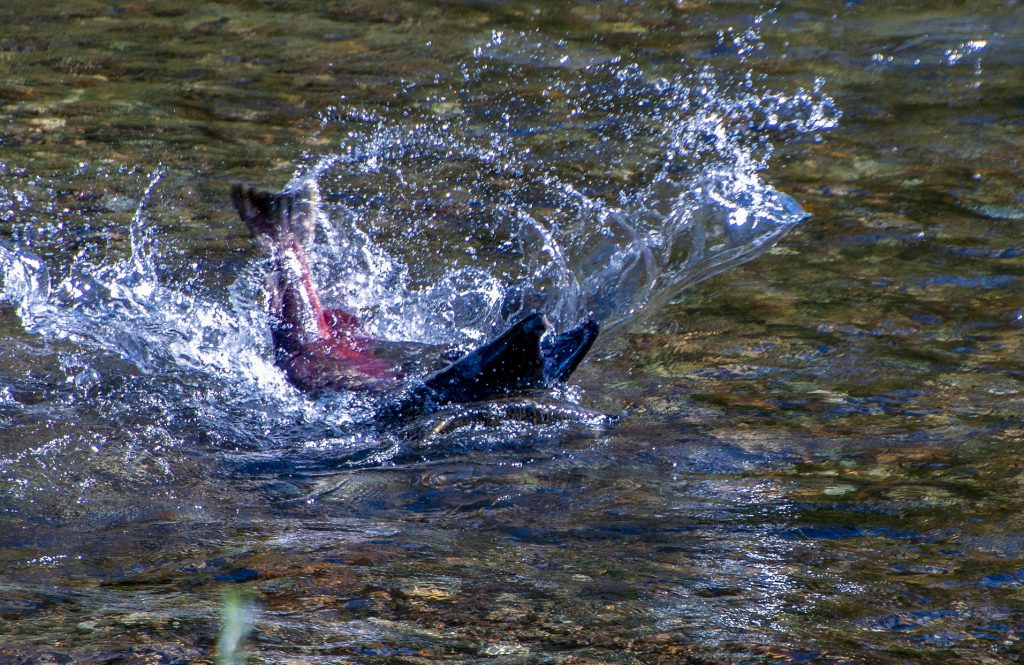
By Brandon Honig
Clear Creek has been transformed multiple times in the past two centuries, but the transformation of the past few decades was designed to last.
Ravaged first by gold-seekers and then by gravel miners, the Sacramento River tributary is today a haven for fish and people alike.
“You get to see big male salmon chasing each other away from females and see females digging redds, or nests. It’s exciting,” said U.S. Fish and Wildlife Service biologist Charlie Chamberlain. “It’s something a lot of people would not expect to see in California except on National Geographic.”
Thirty years ago, it wasn’t something you’d see in Clear Creek either. There was little water flowing, and Saeltzer Dam closed off more than 11 miles of potential habitat for sensitive species like Central Valley steelhead and spring-run Chinook salmon.
The Bureau of Land Management, however, acquired most of the lower Clear Creek channel bottom in a series of deals in the 1990s. At the time, the creek was mainly known as an out-of-the-way place for illegal trash dumping and suspicious activity.
“Some smart people at BLM understood Clear Creek’s potential for restoration, and they got a good deal on it because it was an industrial wasteland,” said biologist Derek Rupert, who oversaw the final phase of the project for the Bureau of Reclamation. “They made some good choices, so now the public owns the majority of this land.”

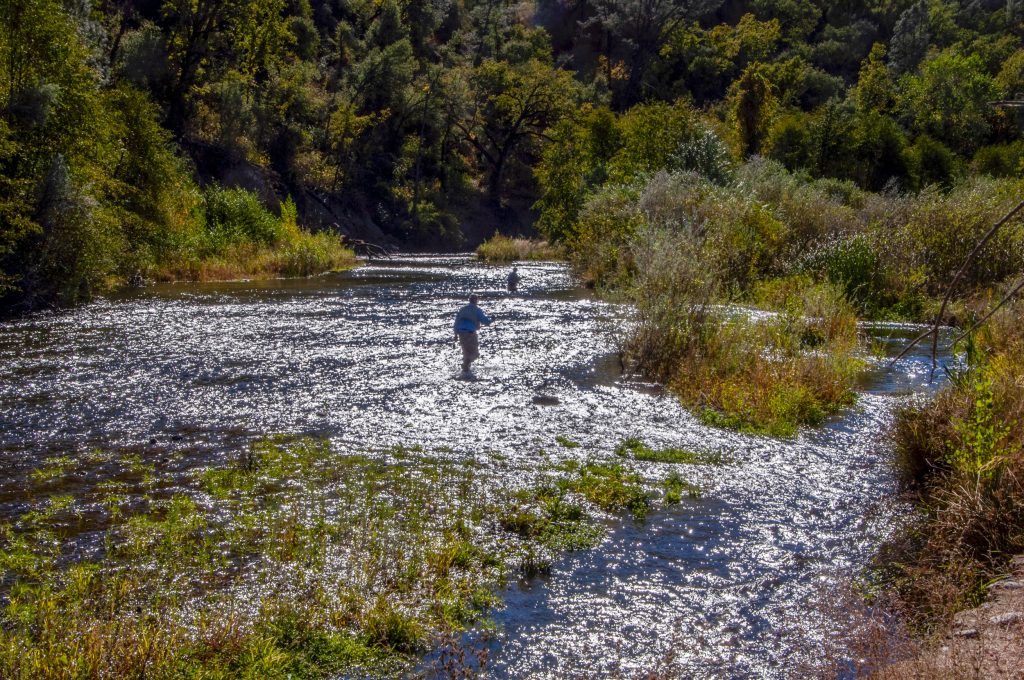
PLANNING A PARTNERSHIP
In 1992, Congress passed a massive fish and wildlife restoration program for California, the Central Valley Project Improvement Act. Among other measures, it singled out Clear Creek for an overhaul to be funded jointly with the state.
The planning process involved a large group of landowners, stakeholders, consultants and agency experts, which delivered a multipronged approach. The plan would reconfigure part of the creek channel, raise the water level, open up areas for fish habitat and increase the stream’s complexity and food production.
“My hat’s really off to those people who were involved in the late 1990s,” said Tricia Bratcher, a habitat restoration coordinator for the California Department of Fish and Wildlife, who joined the Clear Creek Technical Team in 2001. “They really put in some good thought on what restoration should look like, how it would function and the goals associated with all of that.”

Before the work began, she said, Clear Creek looked “thrashed.” There were pits and piles of dredger tailings everywhere, and the water was shallow and warm, with virtually no riparian vegetation. Reports of people lurking there also kept locals away.
To clear the way for the restoration program, the Shasta County Sheriff’s Office teamed with the state and BLM rangers to tighten security and clean up Clear Creek. As the restoration work progressed, residents saw trails, restrooms and parking lots installed.
“Now when we go out there, there are families utilizing the area, swimming with kids, fishing, mountain biking, hiking with dogs,” Chamberlain said. “That greenway vision BLM had is being realized.”

A FOOD-BASED EXPLOSION
Restoration began by increasing water flows through BOR’s Whiskeytown Dam, then removing the privately owned Saeltzer Dam. Those steps brought fish to Clear Creek in the thousands, but the stream was nothing like its former self.
“Miners basically dug a ditch here along the valley and diverted the creek into it so they would have room for gravel extraction,” Chamberlain said of one part of the restoration area. “They took a creek that used to have this dynamism to it and serve a lot of ecological functions, then dumped it into a little chute where it had very little ecological function and no dynamism.”
Creeks are naturally complex. They change speed and direction, pull in branches and move sediment. That action creates gravel bars, riffles and side channels, which foster plant and insect growth.
The channel the gravel miners dug, on the other hand, was like a swiftly moving canal that only eroded downward. It didn’t change over time, and it didn’t create much habitat.
The restoration plan called for filling in the miners’ ditch and restoring the creek’s original path. It also required lowering the floodplain to create longer-lasting habitats and nourishment for rearing fish.
“If you change the shape of the creek so it spreads out and trickles into the floodplain or side channels, you get extra- slow areas where you’ve wet new surfaces, and those floodplains generate a lot of fish food and grow vegetation,” Chamberlain said. “You get a food-based explosion.”
Workers have placed downed trees and more than 180,000 tons of gravel in Clear Creek since the 1990s to help create habitat. Salmon spawning habitat was the original focus, but the work has created diverse conditions that benefit fish in multiple life stages. The latest phase focused on juvenile salmon, but will also provide homes for beavers, song sparrows and pond turtles.
“For juvenile fish, woody debris provides refuges from predators and spots
to hold and wait for food to float, swim or fly by,” said Matt Brown, who managed the U.S. Fish and Wildlife Service’s program on Clear Creek from 1995 to 2017. “There will also be areas for adult fish to hang out and rest before they spawn and other areas with good spawning habitat.”
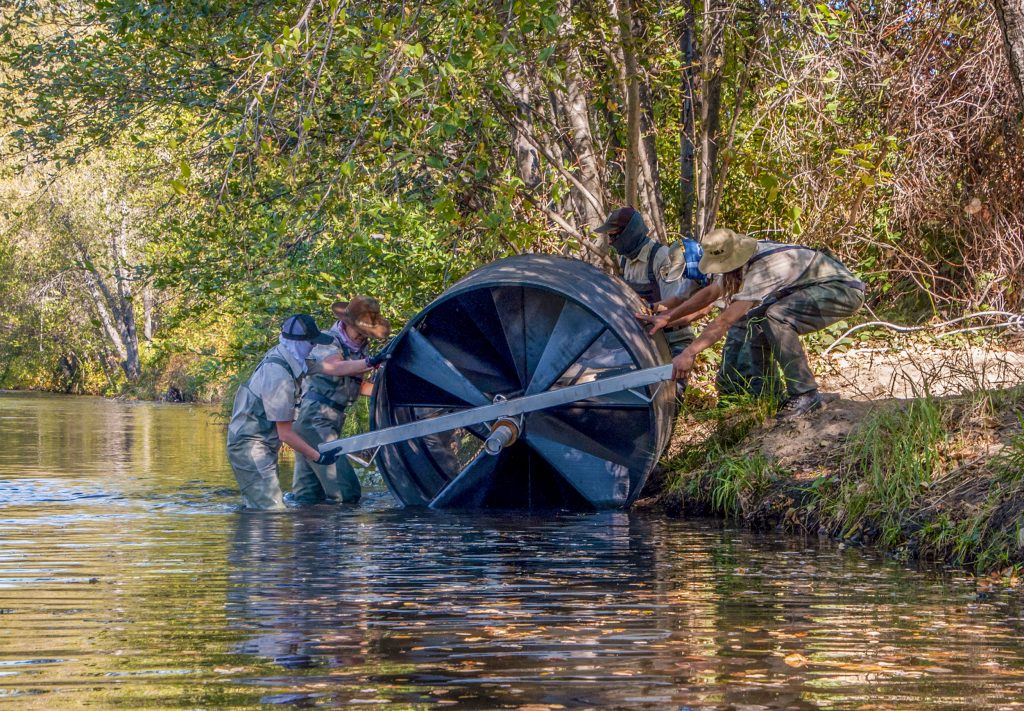
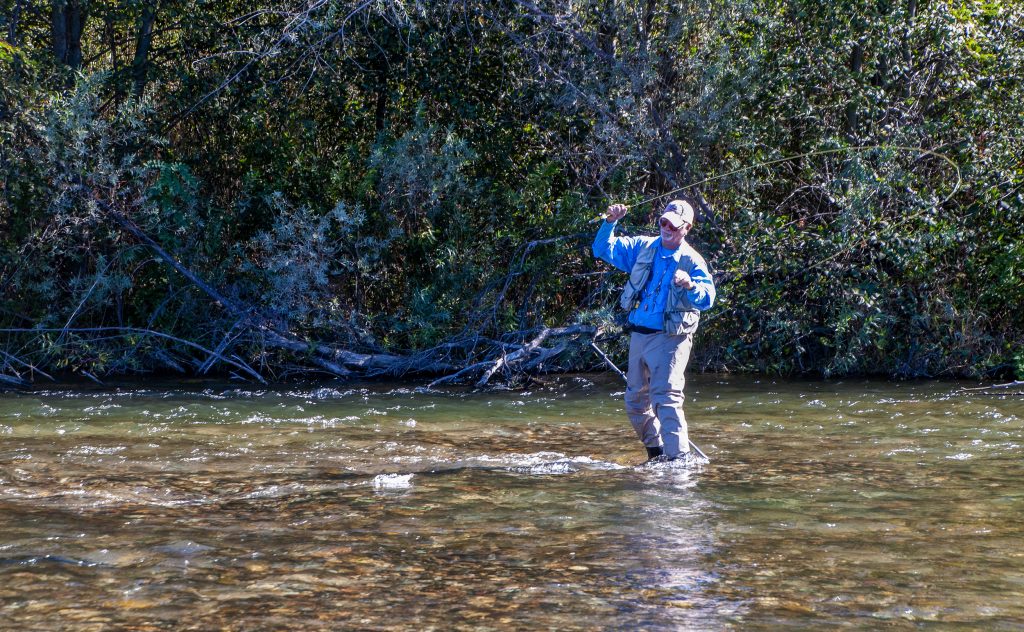
LONG-TERM COMMITMENT
The 2.2-mile Lower Clear Creek Floodway Rehabilitation Project took more than two decades to complete. Along the way, the multiagency tech team overcame challenge after challenge, culminating in completion of the final stage in October.
“I’m proud of the work that came before me and the perseverance they showed,” said Chamberlain, who has worked on the project since 2015. “People
aren’t always resilient enough to insist that ‘There’s a great opportunity here,’ even when the naysayers can’t see it. A vision was implemented here, and it’s working.”
In addition to USFWS, BOR and the state, the project received significant contributions from National Oceanic and Atmospheric Administration’s Fisheries Service, the National Park Service, California Department of Water Resources, the Yurok Tribe and a variety of local organizations, including the Western Shasta Resource Conservation District.
The experience often felt like a marriage, Bratcher said.
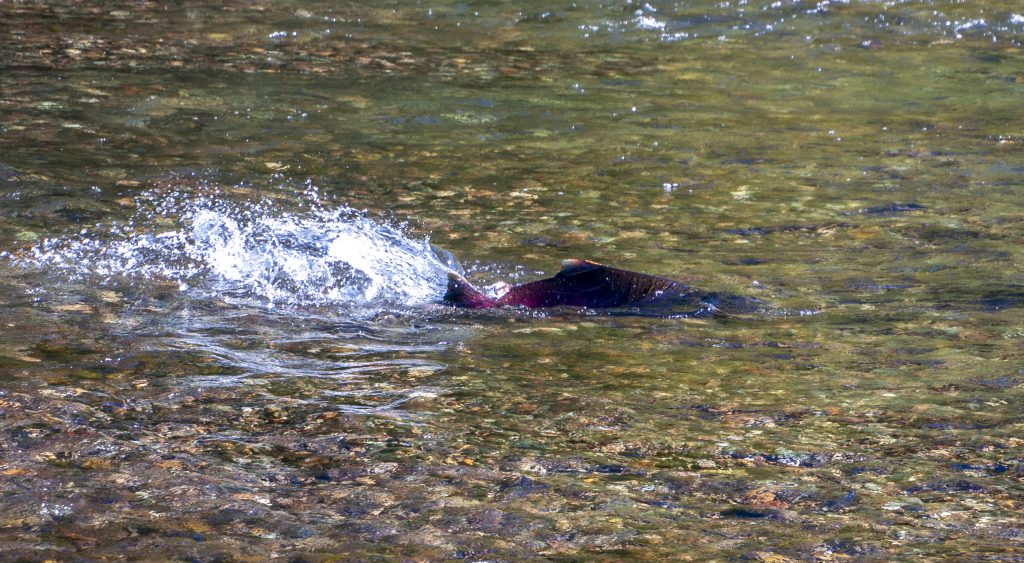
“Sometimes it drives you crazy, but you love the place, so you work through the problems and will be stronger for it,” she said. “We’ve had some really good people, some really knowledgeable people, who have continued to stick it out and really love Clear Creek.”
Also like a marriage, she said, the commitment to Clear Creek should be eternal.
“I’d hate for people to say, ‘We’re done on Clear Creek,’” Bratcher said. “Any time you implement a change, it disrupts the patterns and you have a responsibility. You are beholden to watch over it and be a steward.” CS
Editor’s note: Brandon Honig is an external affairs specialist with the U.S. Fish and Wild- life Service. For more on the Pacific Southwest Region, check out fws.gov/cno.



